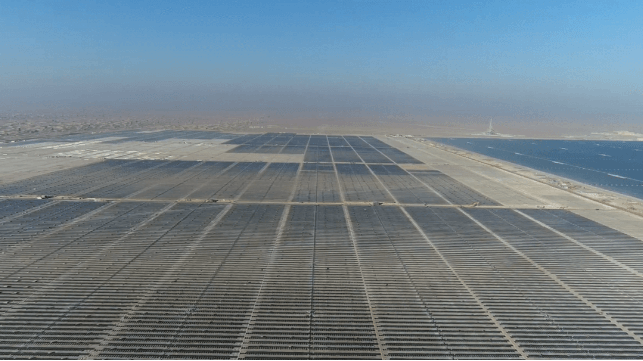Germany Goes Looking for Hydrogen in the Middle East

German Vice-Chancellor Robert Habeck is on a whirlwind tour of the Middle East, looking to arrange supply deals for natural gas, green and blue hydrogen on an expedited basis. Germany has long-term plans to import up to three million metric tonnes per year of hydrogen by the end of the decade, but the Russian invasion of Ukraine has pushed up the timetable. The German government is scrambling to replace Russian gas supplies before the diplomatic fallout from the conflict impacts its economy.
Habeck, along with a delegation of executives from German energy and industrial companies, visited leaders in the United Arab Emirates and Qatar this week. In Qatar - the world's third-largest exporter of LNG - Habeck said that he had reached an agreement with Qatari Emir Sheikh Tamim bin Hamad al-Thani to secure more shipments of natural gas. The emir agreed to provide more energy support for Germany than expected, Habeck told DW. The deal will take time to materialize because of limited LNG import capacity in Northern Europe - Germany has no LNG import terminals of its own - but it is a sign of progress.
“We might still need Russian gas this year, but not in the future," Habeck told DPA.
In the UAE, Habeck signed a long-term agreement on the provision of blue hydrogen, which is produced from natural gas with carbon capture, along with green hydrogen from solar power. “Today’s cooperation thus makes a twofold contribution: they strengthen the achievement of our climate goals and at the same time our energy security,” he said. The UAE will "deliver the first hydrogen to Germany in 2022," according to the Germany's ministry for economic affairs and climate protection.
The arrangements for shipping hydrogen from the Persian Gulf to Germany at scale may be challenging to accomplish. Liquefied hydrogen requires specialized cryogenic vessels, and the world's first trial-size hydrogen carrier has only just started operation. A more viable option could be to convert the hydrogen fuel into ammonia, then load the ammonia aboard specialized tankers for transport to Europe. At the far end, the ammonia could be used as an energy source directly, or the process could be reversed to extract hydrogen gas. In an early sign that this could be the preferred direction, Germany's first ever LNG import terminal will be built with an adjacent ammonia terminal, with an added cost in the nine figures.
